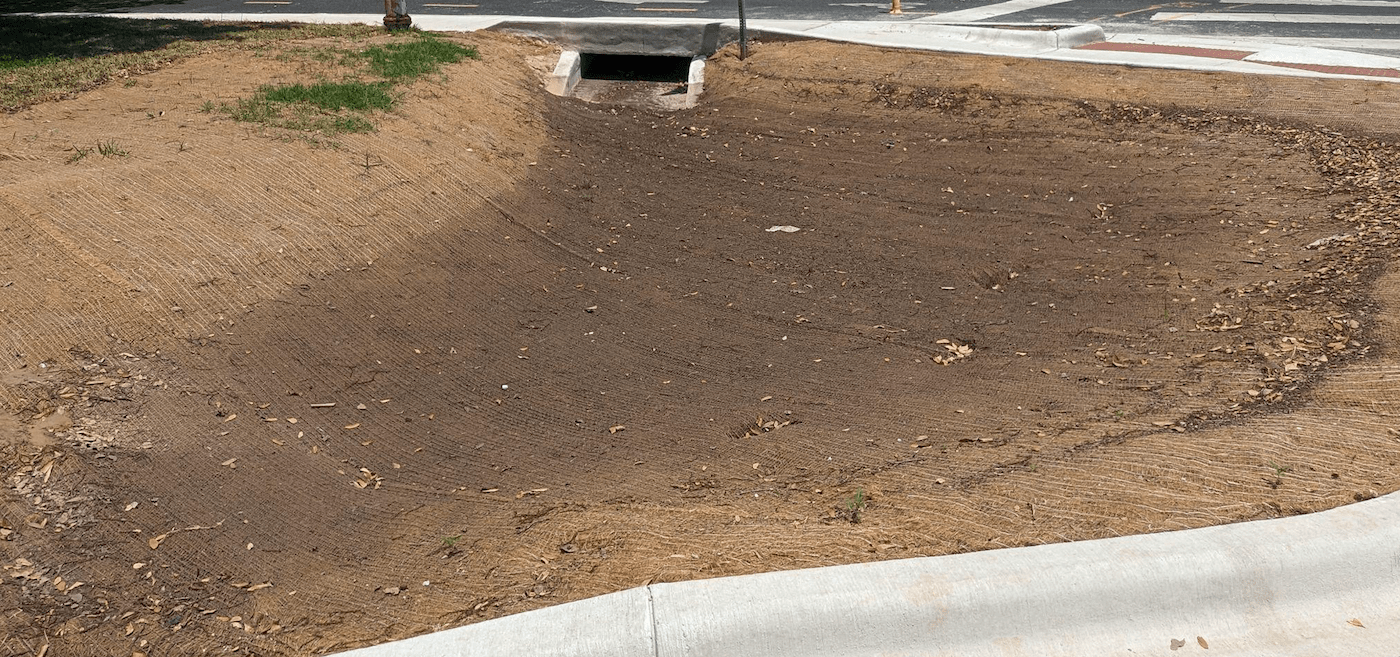Rain Garden Adoption Program
The City of Austin’s Grow Green fact sheet describes rain gardens and their purpose beautifully:
“A rain garden is a shallow, vegetated depression designed to absorb and filter runoff from hard (impervious) surfaces like roofs, sidewalks, and driveways. Rain gardens are usually planted with colorful native plants and grasses. They not only provide an attractive addition to the [space], but also help to conserve water and protect our water quality.
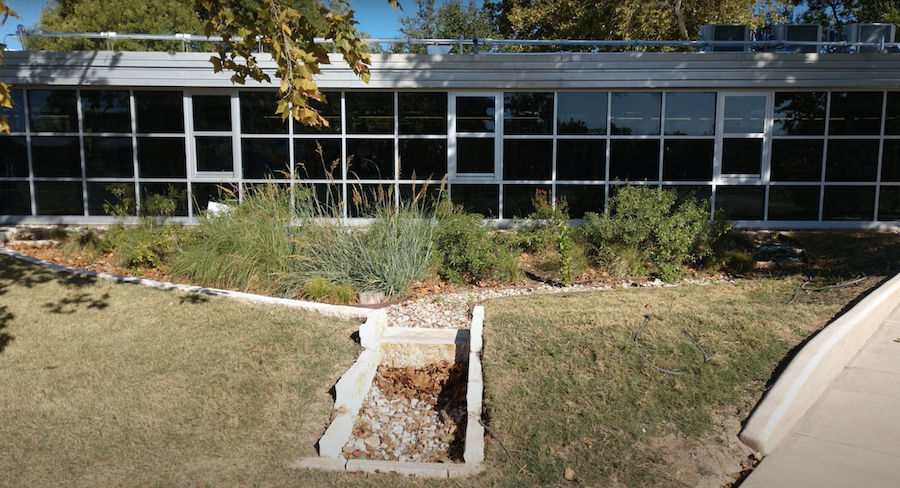
“As Austin becomes increasingly urbanized, native landscapes are replaced with impervious surfaces that prevent rainwater from soaking into the ground. Stormwater quickly runs off these hard surfaces, picking up pollutants from the land and carrying them to our creeks. This rapidly flowing water also increases the chances of flooding and erosion.
“The goal of a rain garden is to keep water on the land. Rain gardens, with their shallow depressions, capture stormwater and provide for natural infiltration into the soil. This provides water for the plants and helps maintain a constant flow of water in our streams through groundwater. They also help filter out pollutants including fertilizers, pesticides, oil, heavy metals and other chemicals that would otherwise reach our creeks through storm drains or drainage ditches. By reducing the quantity of water that runs off […], rain gardens help lower the risk of flooding and erosion.”
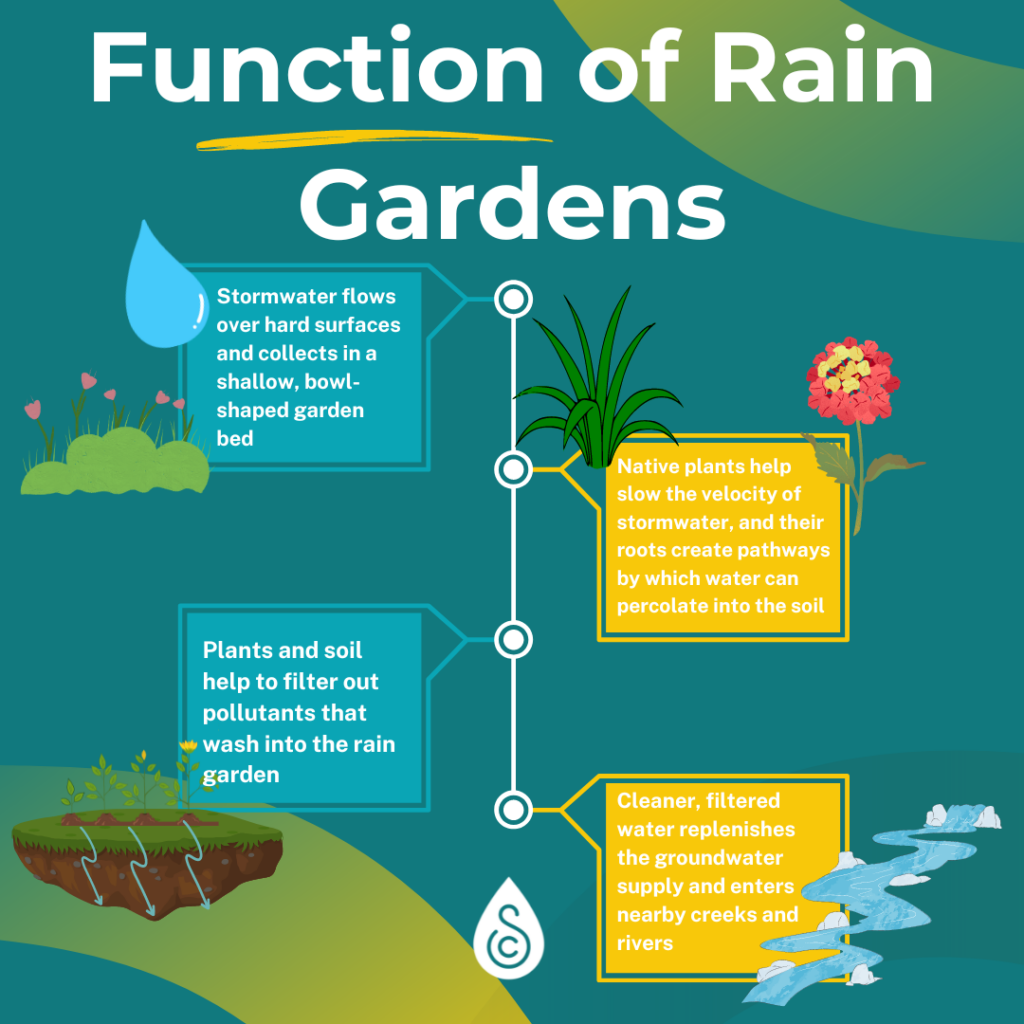 One of the priorities outlined in the Shoal Creek Watershed Action Plan is the installation of more rain gardens in the Shoal Creek watershed. Shoal Creek Conservancy is partnering with the City of Austin and community members to do just that.
One of the priorities outlined in the Shoal Creek Watershed Action Plan is the installation of more rain gardens in the Shoal Creek watershed. Shoal Creek Conservancy is partnering with the City of Austin and community members to do just that.
Woodview Rain Garden
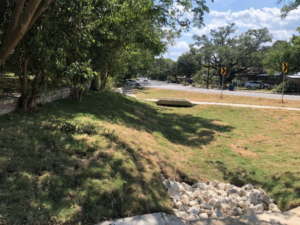
As part of the 2016 Mobility Bond, and with input from the Watershed Protection Department, a rain garden was constructed at the corner of Shoal Creek Blvd and Woodview Avenue by the Austin Transportation Department in August 2020. Shoal Creek Conservancy is facilitating neighborhood and community adoption of this rain garden by coordinating services and supplies, and educating, guiding, and supporting volunteers during the establishment and maintenance phases.
Efforts & Progress
6/18/2022 Began the process of solarization to prepare the rain garden for native plantings in the fall with the plan to transform it from mowed bermuda turfgrass to native plants which will benefit rain garden function, water quality in Shoal Creek, pollinators, and the beauty of this corner of the neighborhood.
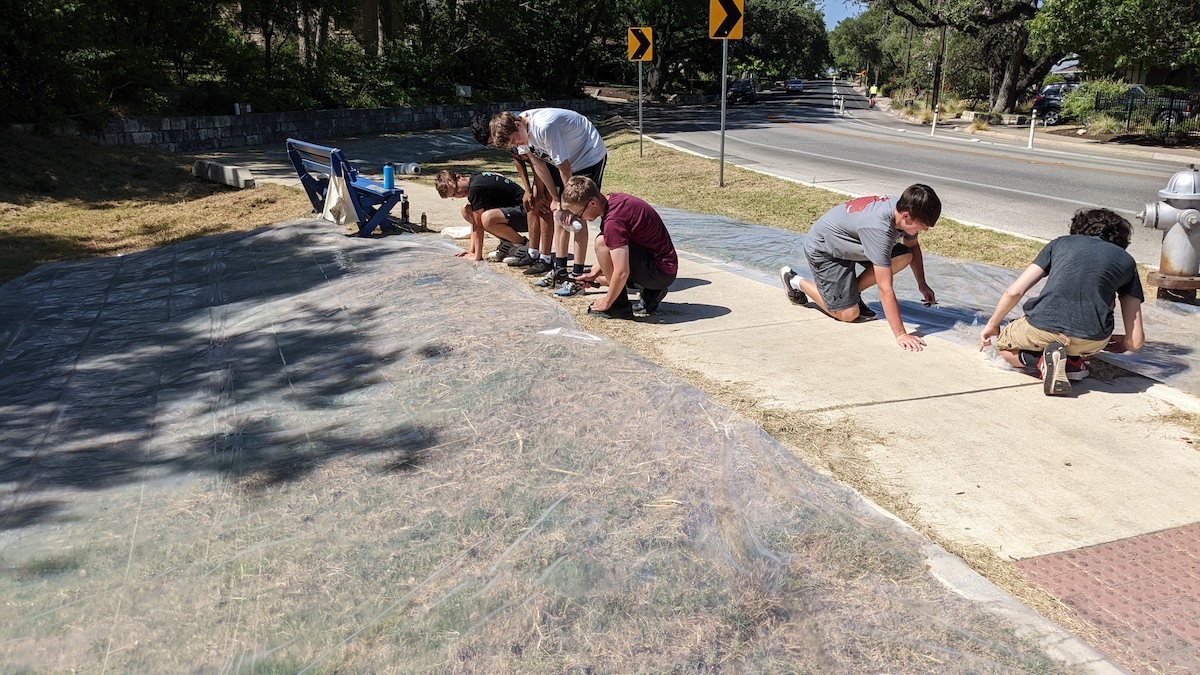
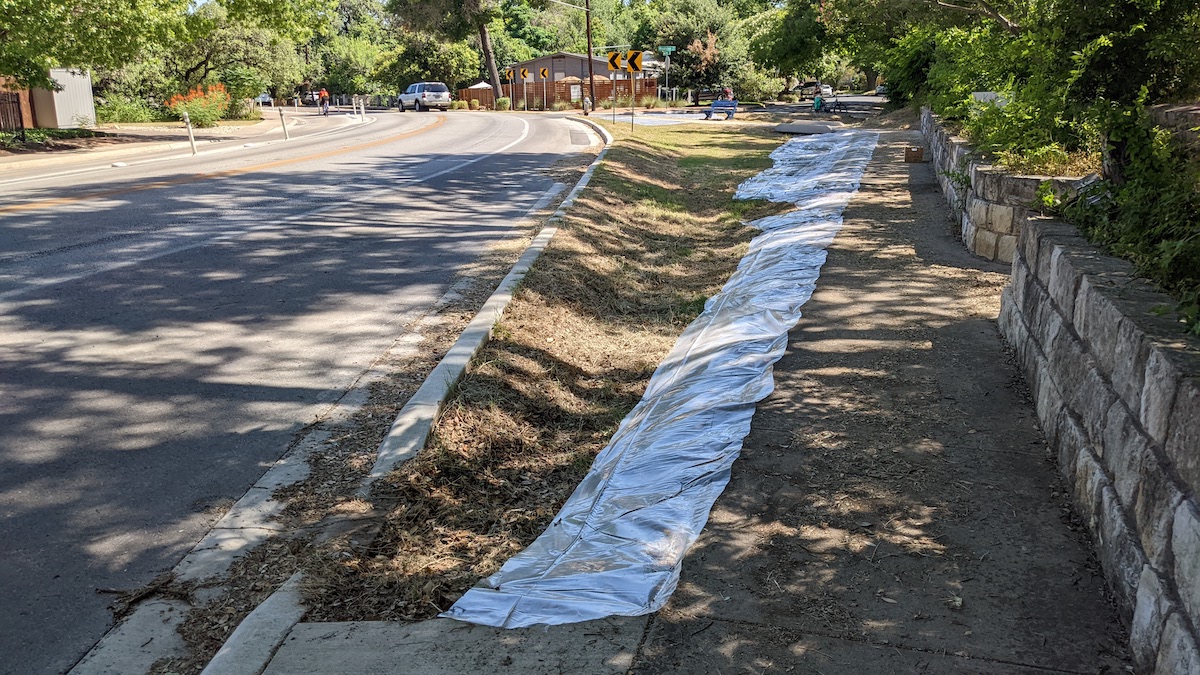
7/30/2022 Continue solarization in other areas of the rain garden.
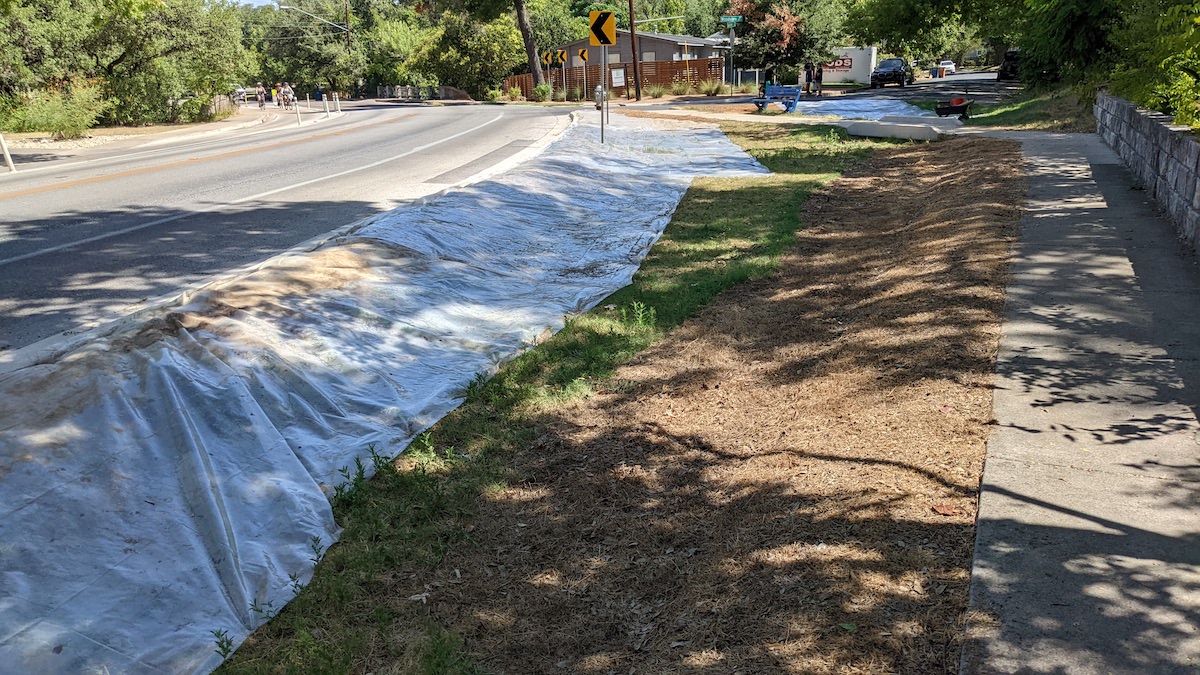
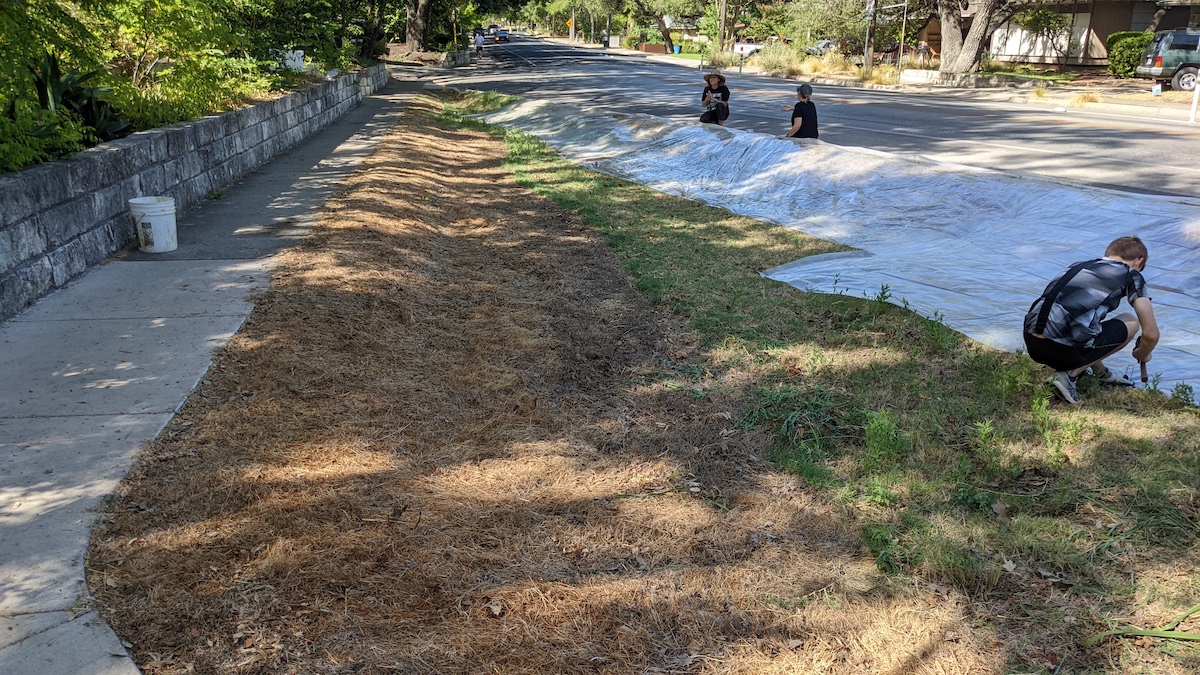
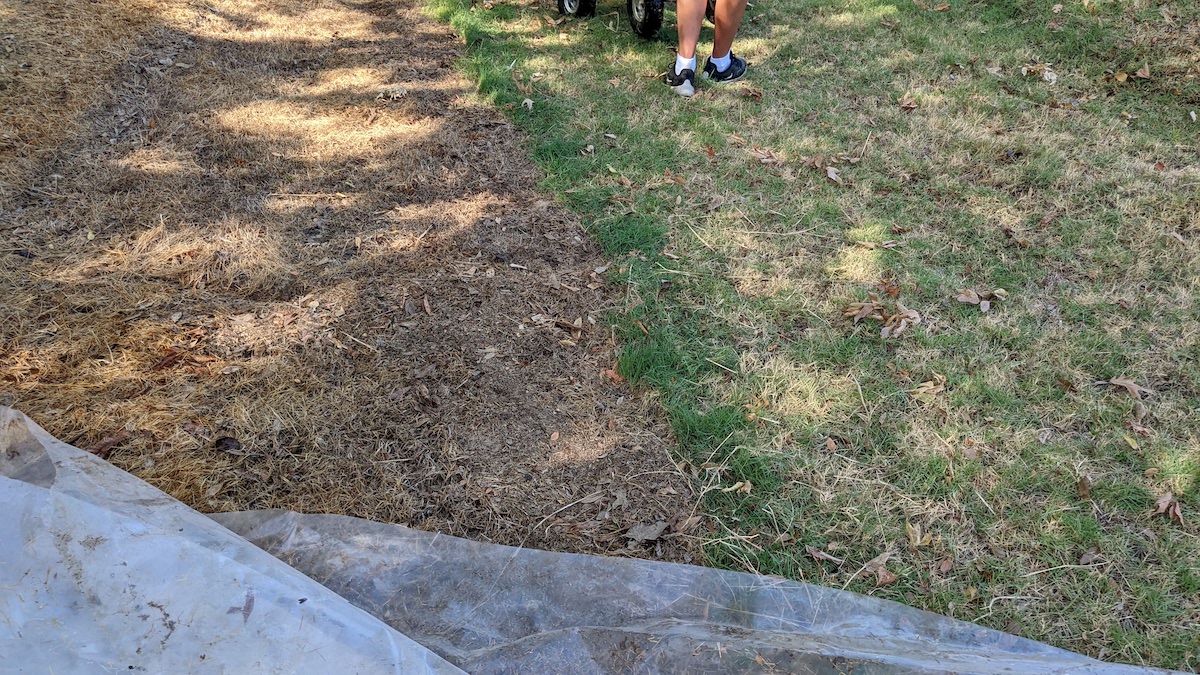
9/11/2022 Final solarization workday in the remainder of the rain garden.
11/20/2022 Hardworking volunteers were guided by Drew Sloat, City of Austin Landscape Architect, in rebuilding the rain garden’s inlet to improve functionality and make it easier to maintain. Also, they planted approximately 80 native plants, beginning the task of transforming the rain garden from bermuda turfgrass to native vegetation.
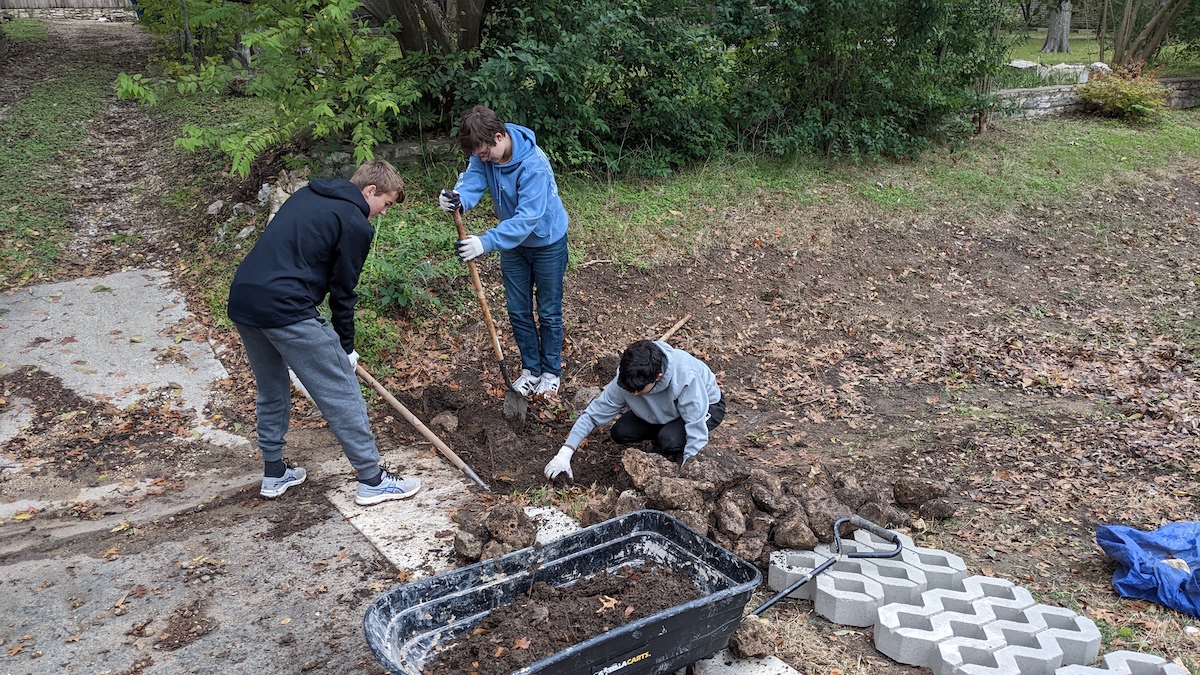
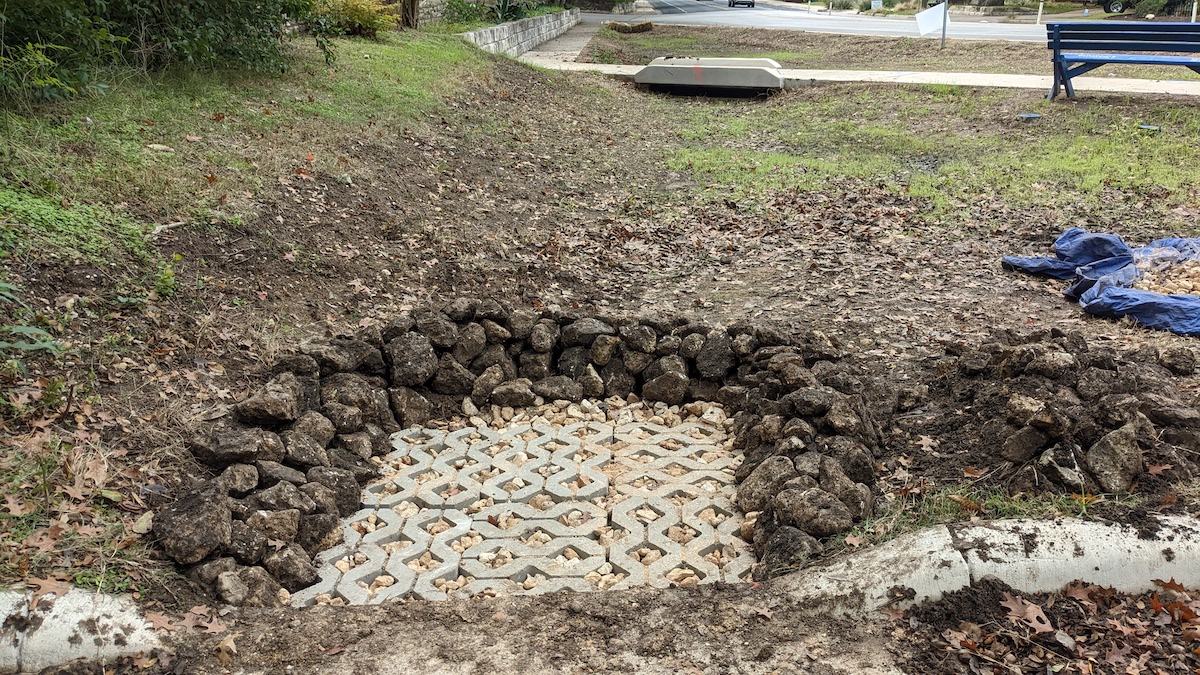
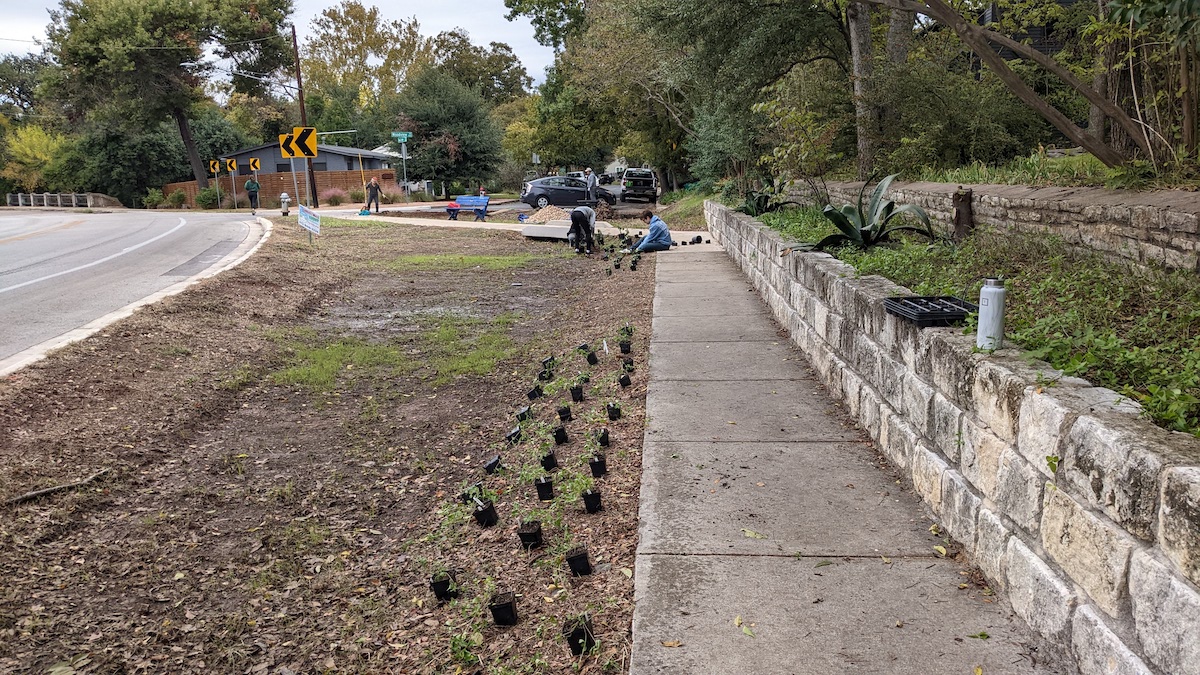
12/11/2022 After an irrigation system (purple pipes) was installed by Environmental Survey Consulting the prior week, an efficient group of 18 neighborhood and community volunteers planted nearly 400 native plants and grasses in just under 2 hours, covering approximately two thirds of the rain garden! The fall and winter rains will give these plants a great start and the irrigation system will keep the garden thriving during next year’s dry summer months.
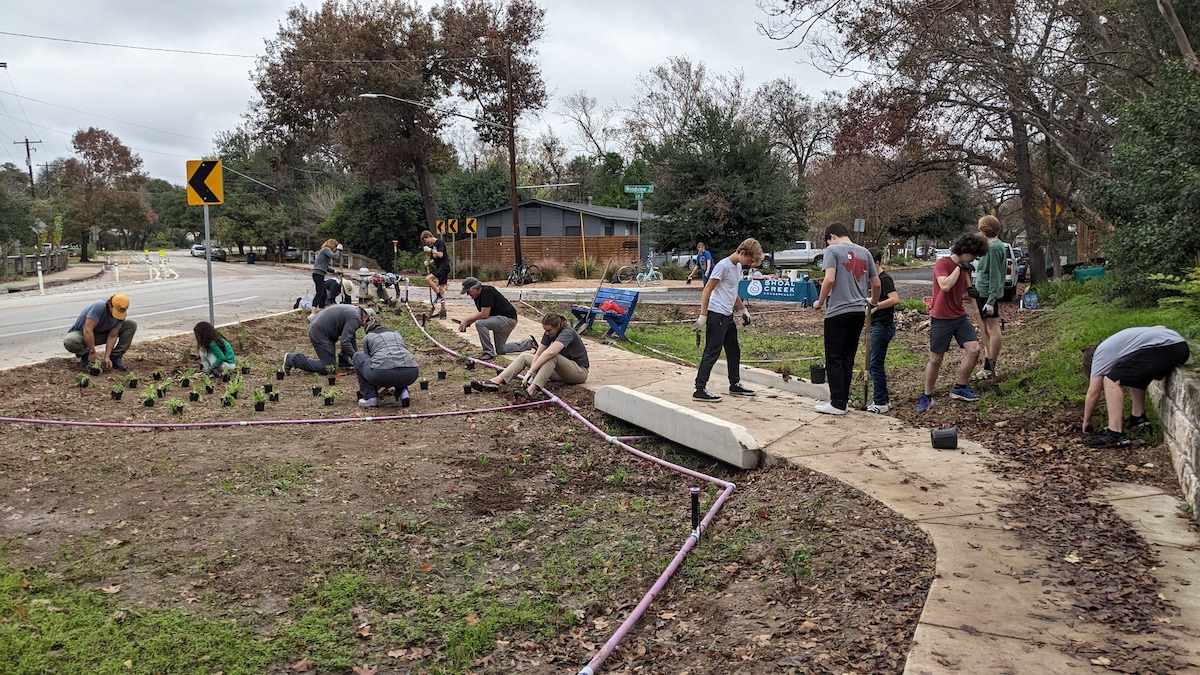
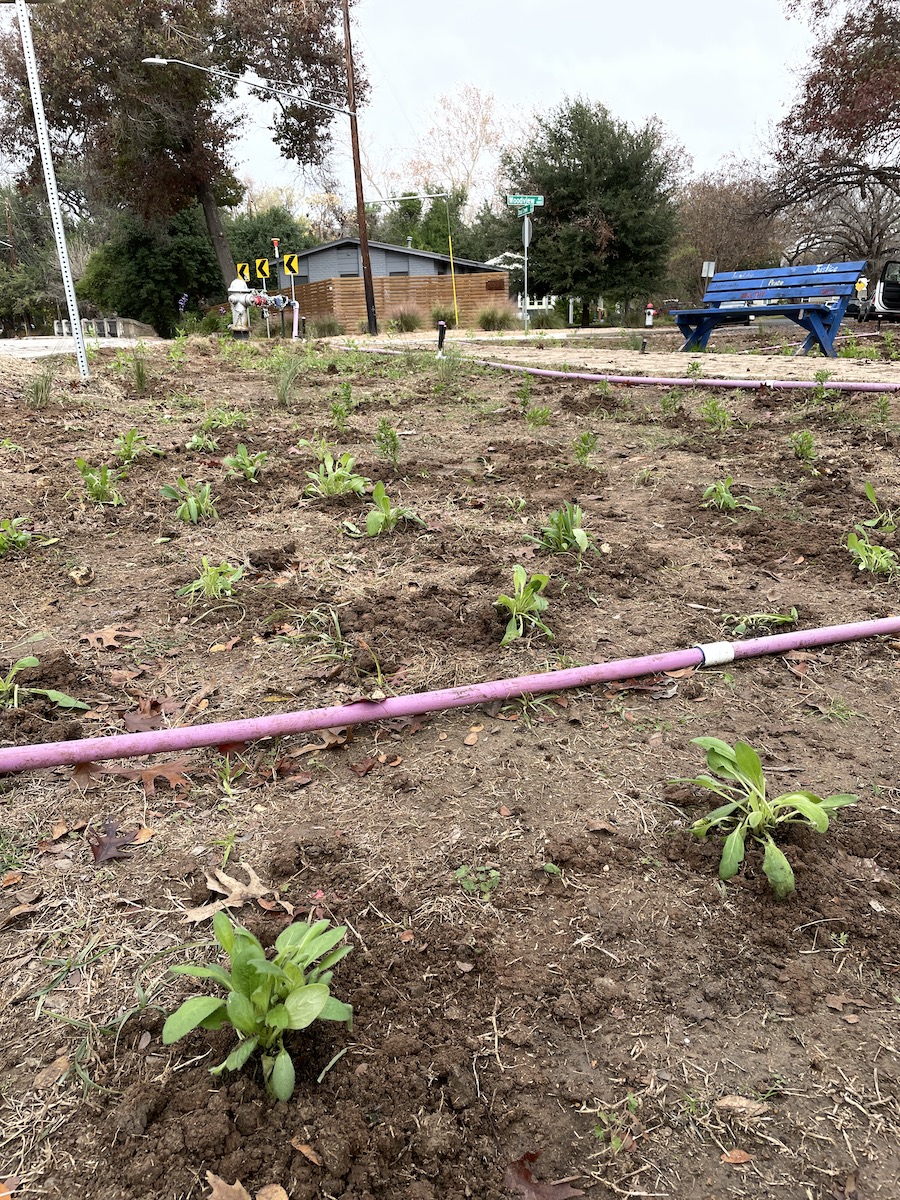
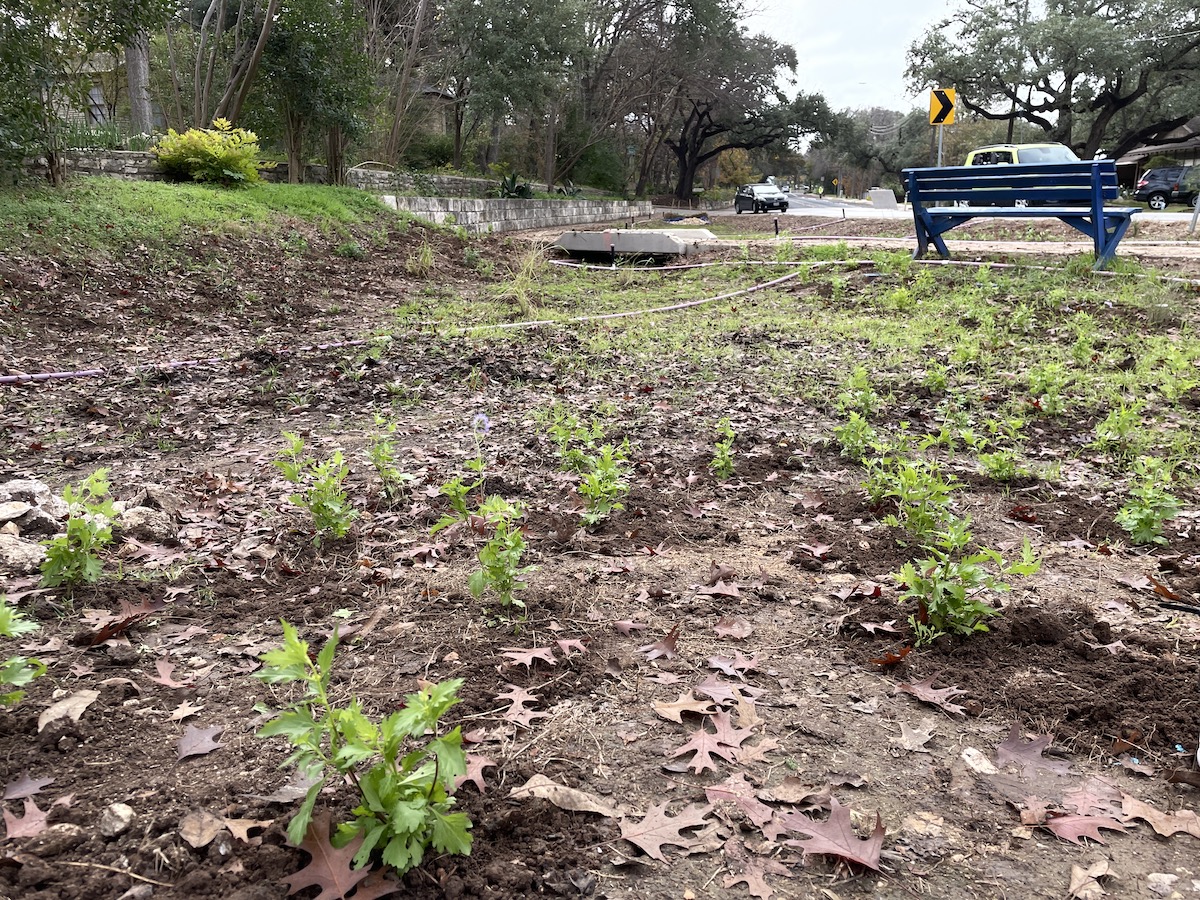
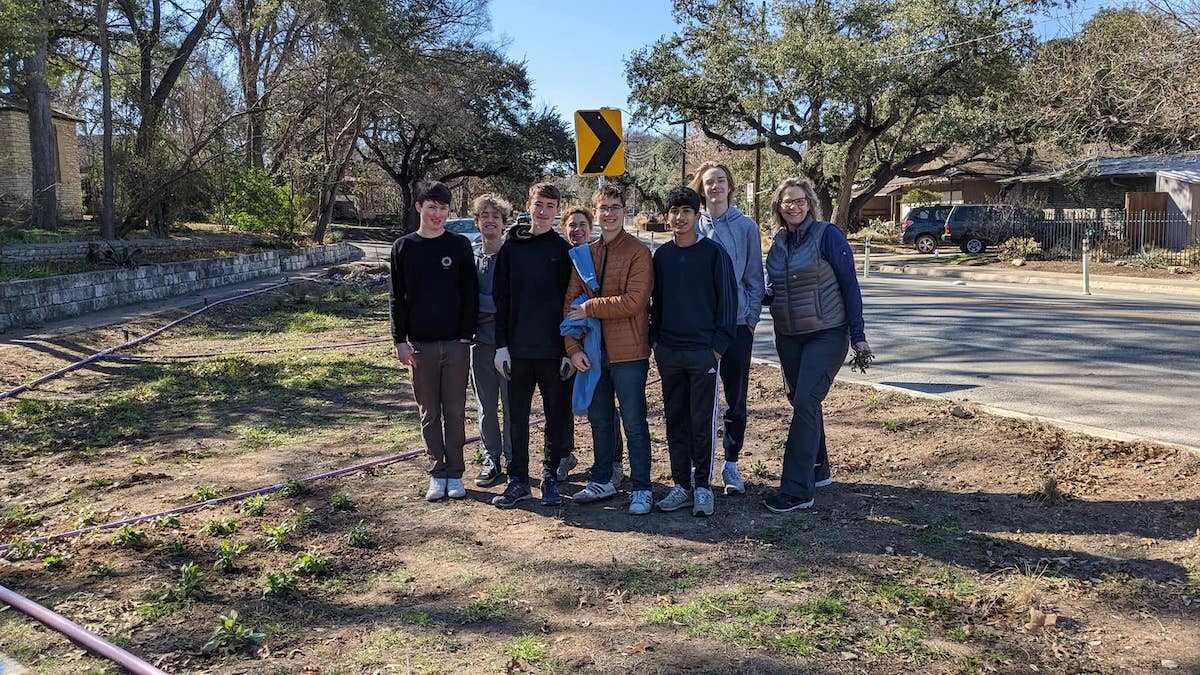
6/17/2023 Neighborhood volunteers have been weeding the rain garden throughout the spring and today, in addition to weed removal, volunteers also cleaned out the rain garden inlet and planted approximately 80 native plants which will receive regular watering from the previously installed irrigation system.
9/24/2023 and 10/8/2023 Weeded the rain garden and cleared the inlet.
10/22/2023 Celebrated one year of the Woodview Rain Garden!
1/28/2024 Weeded, cut back dead plants, and cleared the rain garden inlet.
2/18/2024 Weeded, planted native grasses, and cleared the rain garden inlet.
3/24/2024 Weeded and cleared the rain garden inlet.
4/21/2024 Congratulations to Brandon for completing his Eagle Scout project by designing and installing a brand new educational sign in the Woodview Avenue rain garden! Big thanks to the neighborhood volunteers who helped with the installation process. The sign details the function of a rain garden, some background information about the Woodview rain garden, and highlights some of the blooms that you might see while checking out the garden.
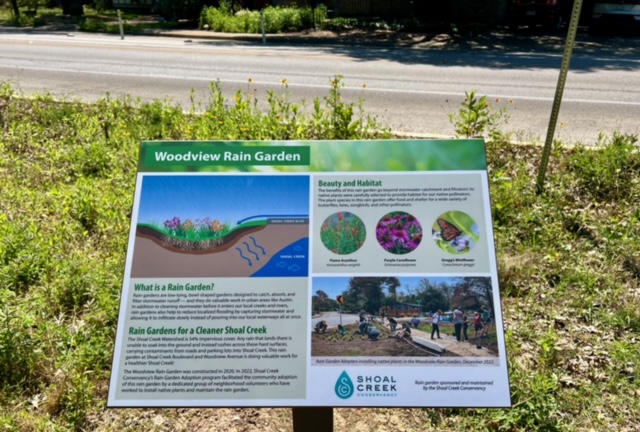

7/21/2024 Removed invasive Johnson grass and ragweed and cleared the rain garden inlet.
Three New Rain Gardens, Spring 2024
In April and May 2024, the Austin Watershed Protection Department and Austin Transportation and Public Works Department approved and constructed three new rain gardens along Shoal Creek Blvd at the intersections of Great Oaks Parkway, Twin Oaks Drive, and Greenlawn Parkway. Shoal Creek Conservancy is facilitating neighborhood and community adoption of these rain gardens by coordinating services and supplies, and educating, guiding, and supporting volunteers during the establishment and maintenance phases.
Great Oaks Parkway
Efforts & Progress
5/9, 5/14, 5/21, 6/3 and 6/10/2024 Weather delays created difficulty in scheduling volunteer workdays, but SCC staff managed multiple shorter visits to the rain garden in May and June to plant creek sedge, giant spiderwort, red tropical sage, horseherb, gregg’s mistflower, American beautyberry, inland sea oats, black eyed susan, prairie verbena, and fall obedient plant.
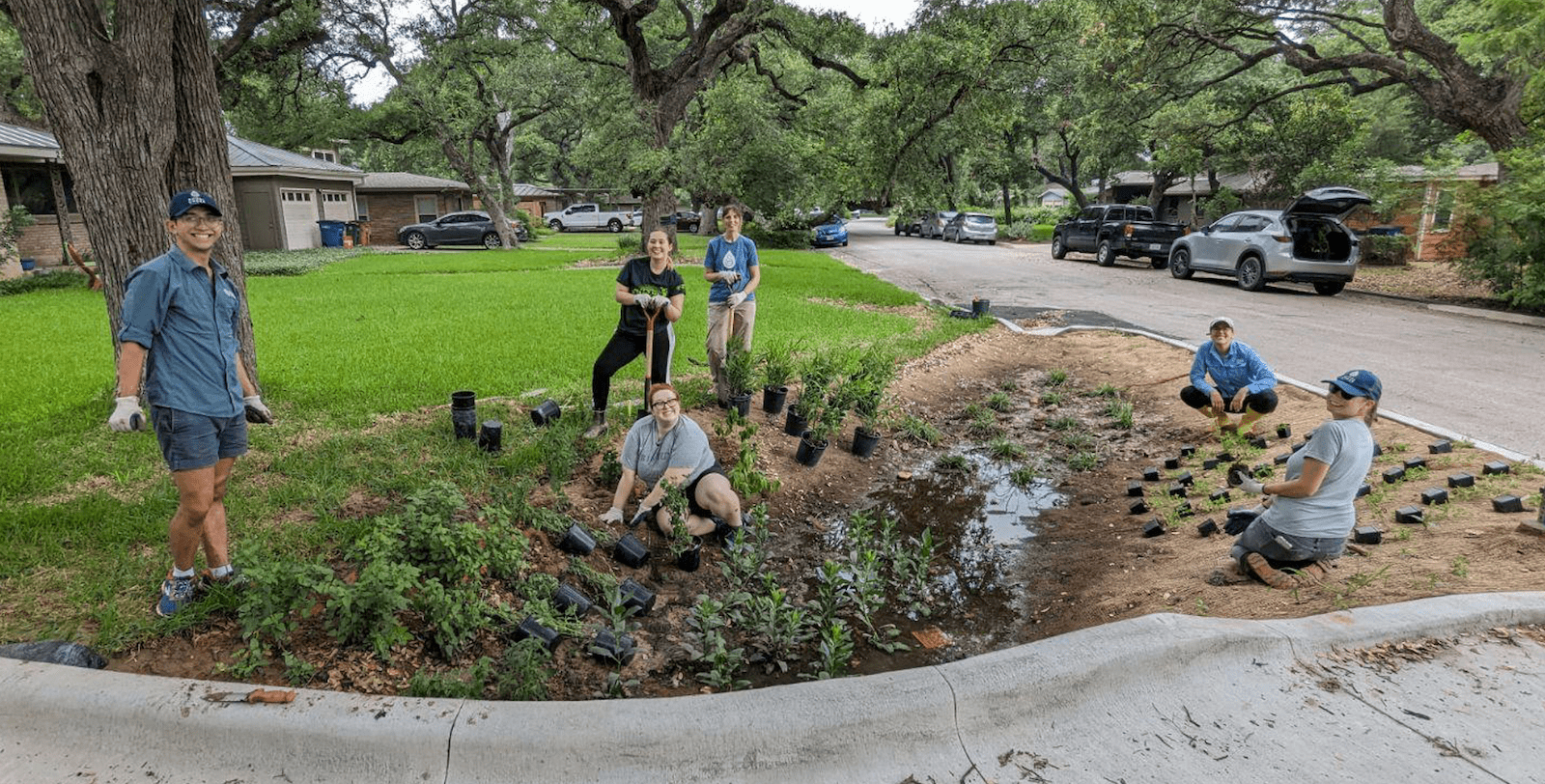

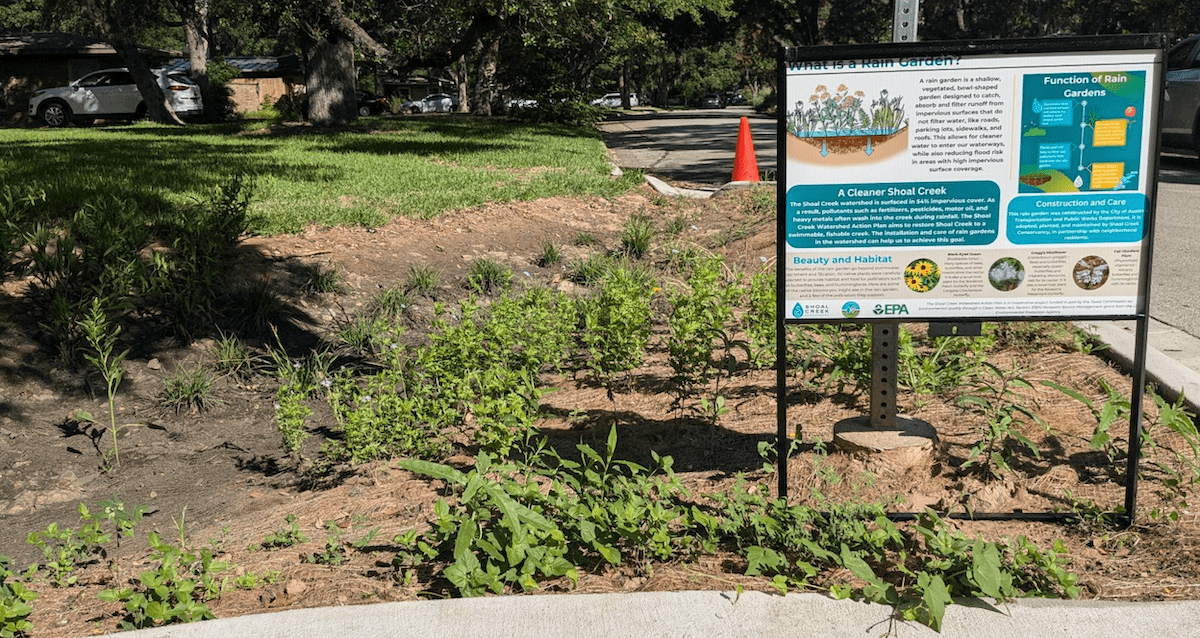
Twin Oaks Drive
Efforts & Progress
5/26/2024 A group of 11 volunteers planted nearly 200 native plats including creek sedge, horseherb, gregg’s mistflower, inland sea oats, black eyed susan, eastern gamagrass, maximilian sunflower, and fall obedient plant.
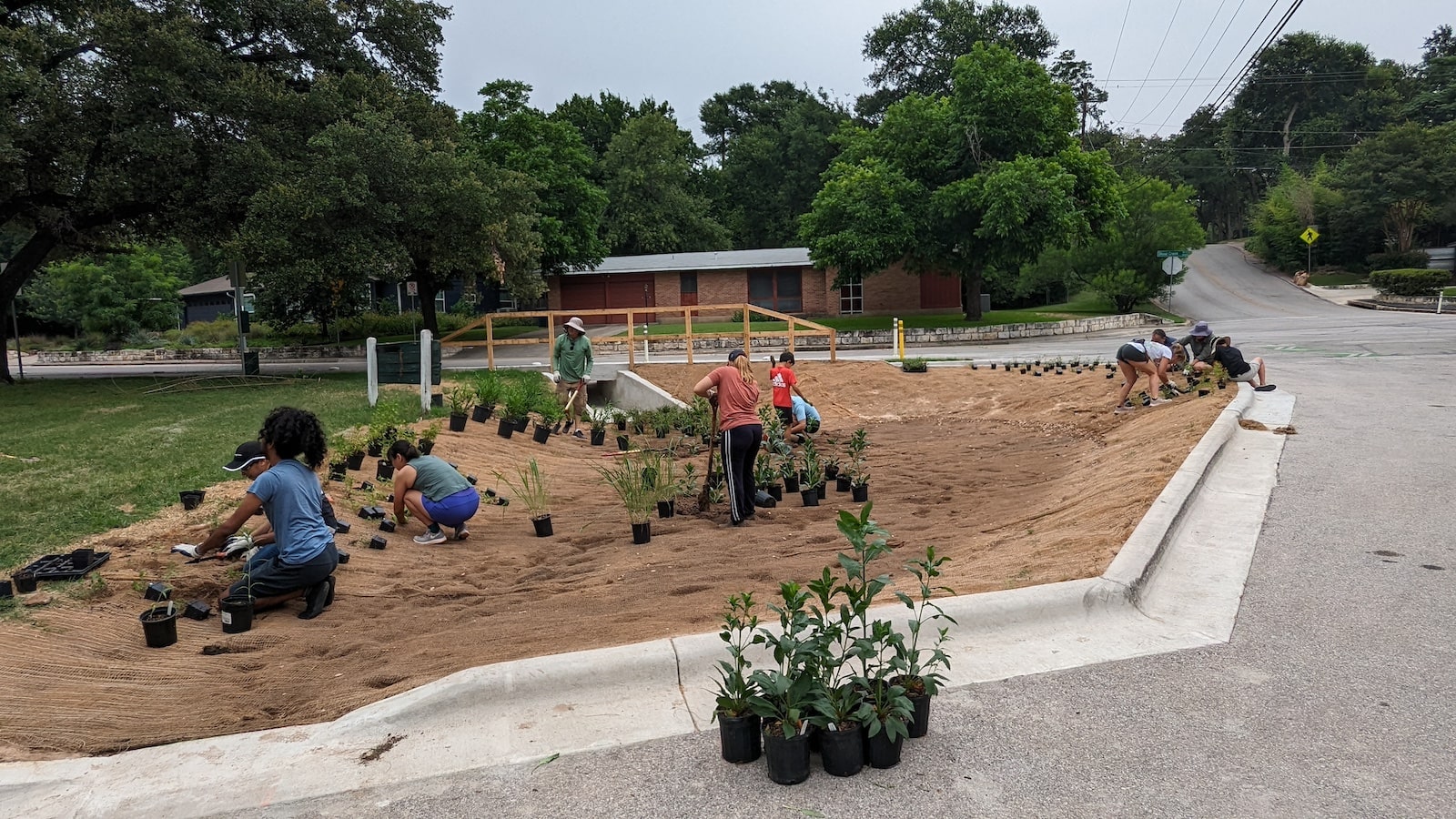
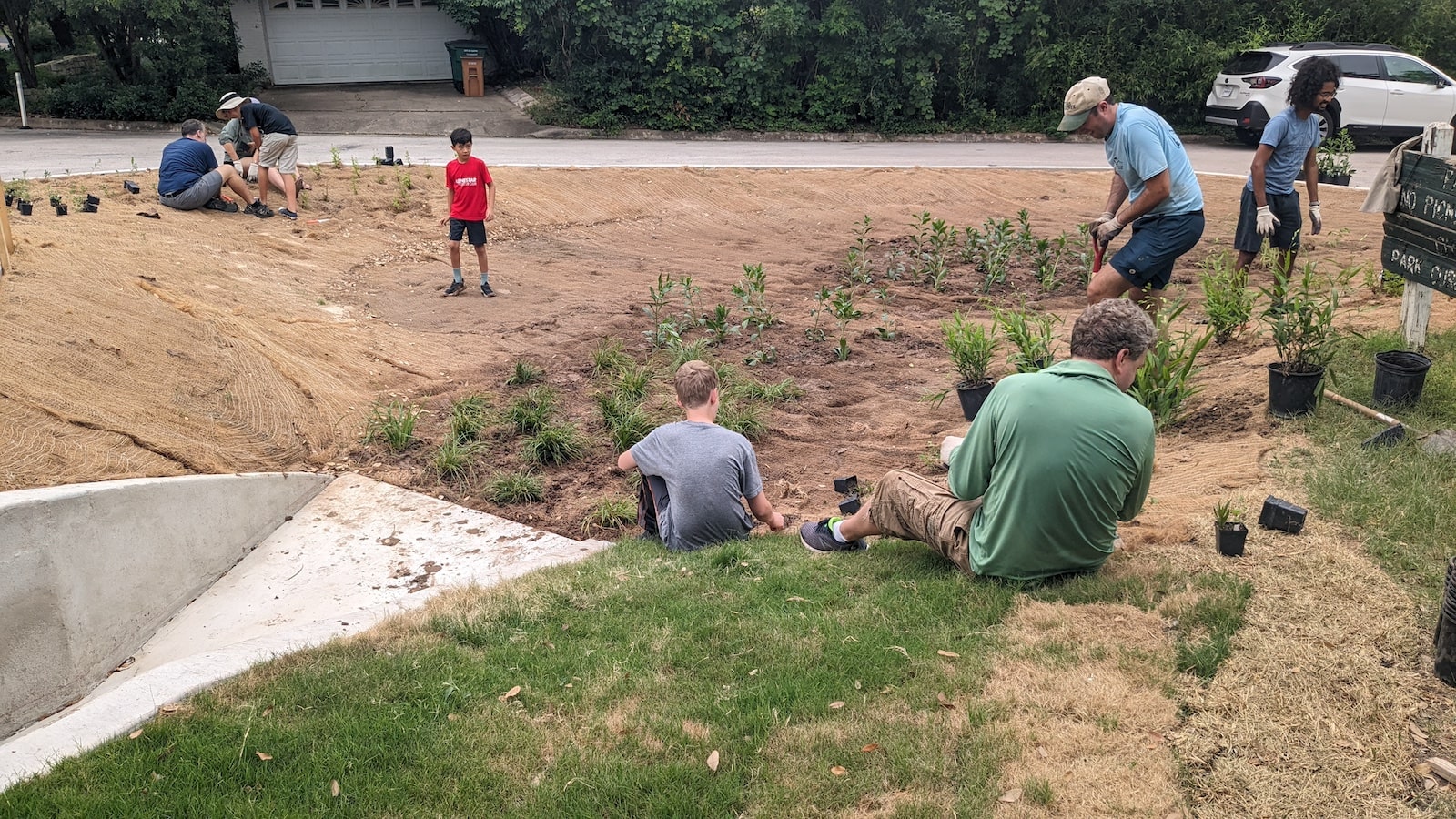
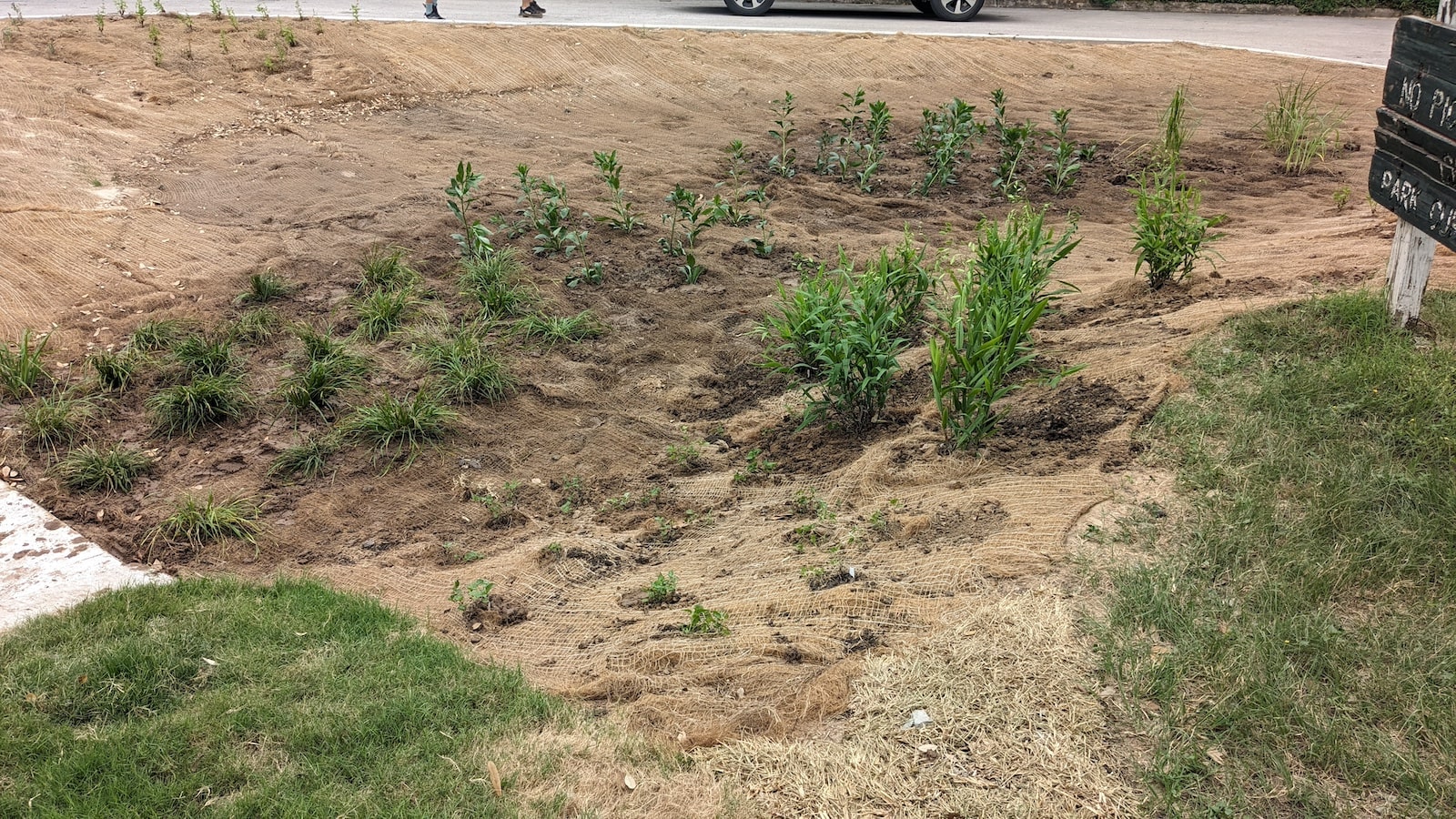
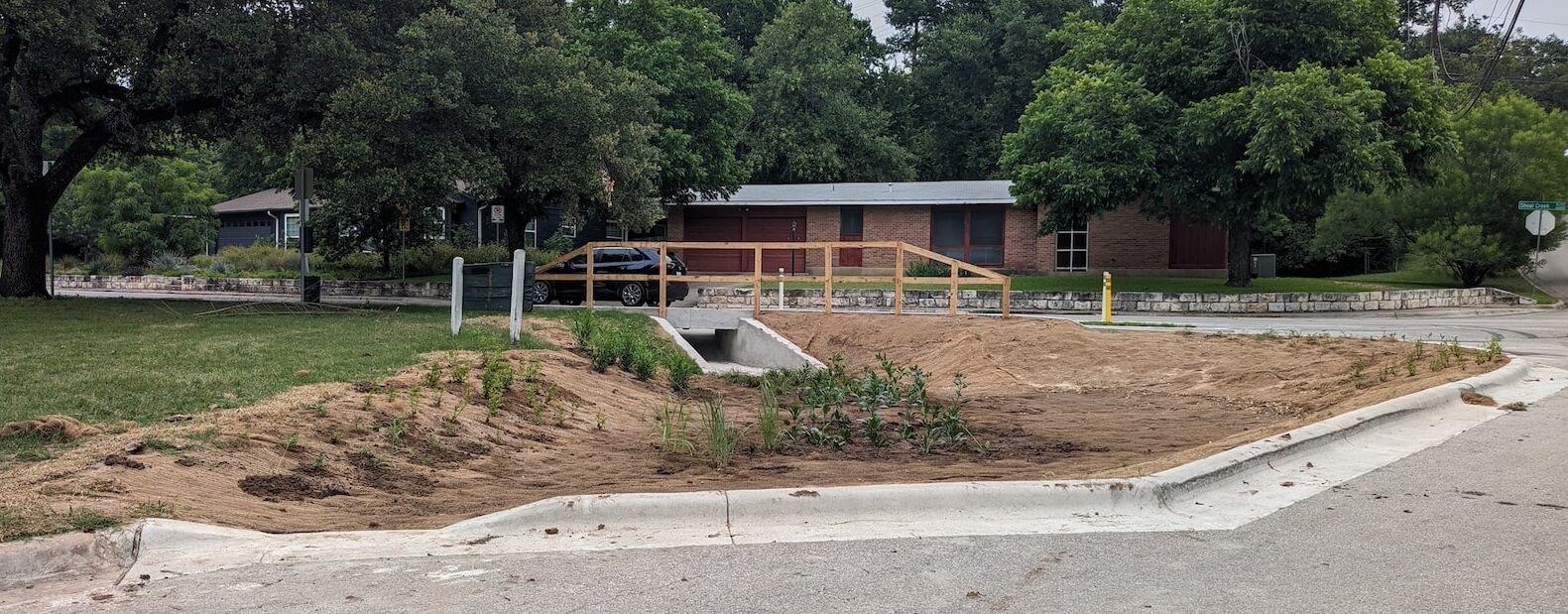
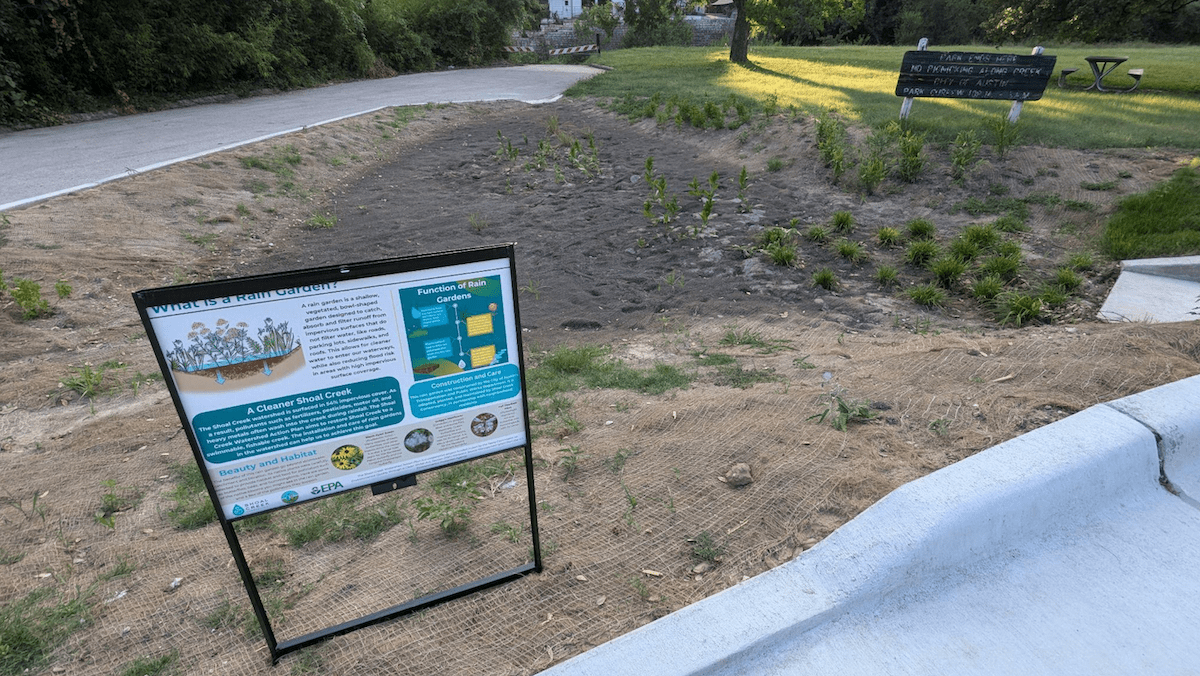
Greenlawn Parkway
Efforts & Progress
5/28/2024 Rather than plant this area that is in full sun, SCC staff seeded the rain garden soil with Native American Seed Pocket Prairie Mix and Texas Native Mix, and will coordinate plantings in the fall.
